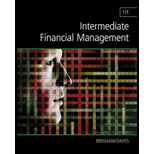
Case summary:
Individual A, money related director of company W, has been inquired by the firm’s CEO, individual F, to assess the company’s stock control techniques and to lead a dialog of the subject with the senior executives. Individual A plans to utilize as a case one of company W’s “big ticket” things, a customized computer a microchip that the firm employments in its portable workstation computers. Each chip costs company W $200, and it must moreover pay its supplier a $1,000 setup charge on each arranges; the minimum the arrange measure is 250 units. Webster’s yearly usage of the figure is 5,000 units, and the yearly carrying fetched of this thing is assessed to be 20% of the normal inventory value. Individual A plans to start her session with the senior executives by looking into a few fundamental stock concepts, after which she will apply the EOQ demonstrate to company W’s microchip stock.
To determine: The effect would this have on total inventory costs, the new reorder point, and protection does the safety stock provide if usage increases, or if delivery is delayed.
Want to see the full answer?
Check out a sample textbook solution
Chapter 23 Solutions
Intermediate Financial Management (MindTap Course List)
 Intermediate Financial Management (MindTap Course...FinanceISBN:9781337395083Author:Eugene F. Brigham, Phillip R. DavesPublisher:Cengage Learning
Intermediate Financial Management (MindTap Course...FinanceISBN:9781337395083Author:Eugene F. Brigham, Phillip R. DavesPublisher:Cengage Learning Cornerstones of Financial AccountingAccountingISBN:9781337690881Author:Jay Rich, Jeff JonesPublisher:Cengage Learning
Cornerstones of Financial AccountingAccountingISBN:9781337690881Author:Jay Rich, Jeff JonesPublisher:Cengage Learning Principles of Cost AccountingAccountingISBN:9781305087408Author:Edward J. Vanderbeck, Maria R. MitchellPublisher:Cengage Learning
Principles of Cost AccountingAccountingISBN:9781305087408Author:Edward J. Vanderbeck, Maria R. MitchellPublisher:Cengage Learning Auditing: A Risk Based-Approach (MindTap Course L...AccountingISBN:9781337619455Author:Karla M Johnstone, Audrey A. Gramling, Larry E. RittenbergPublisher:Cengage LearningPrinciples of Accounting Volume 1AccountingISBN:9781947172685Author:OpenStaxPublisher:OpenStax College
Auditing: A Risk Based-Approach (MindTap Course L...AccountingISBN:9781337619455Author:Karla M Johnstone, Audrey A. Gramling, Larry E. RittenbergPublisher:Cengage LearningPrinciples of Accounting Volume 1AccountingISBN:9781947172685Author:OpenStaxPublisher:OpenStax College





